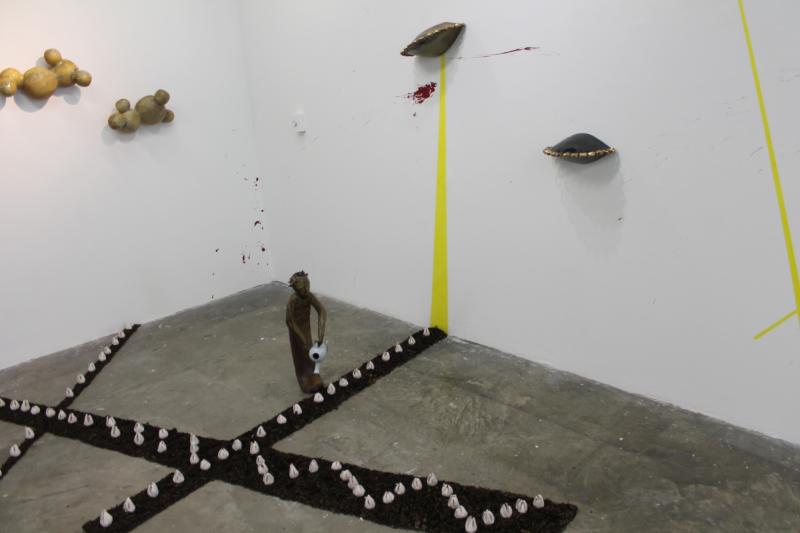Hadrian Mendoza
Contact, ceramic, dirt, acrylic. 2018.
Clouds, ceramic. 2018.
Bloom, ceramic. 2018.
Contact is the ultimate way to feel and absorb the essence of someone or something. A physical touch opens our senses and puts one in direct dialogue with the reality of another individual or object. Contact allows relationships among people to be grounded and it creates an interaction that gives permission for both parts of the equation to interact and react from this exchange. In this body of work I explore subjects that deal with possibilities, beliefs, dreams and reality through the installations in Contact.
In Calling Earth, the possibility of life forms from different planets meeting are expressed through violent splatters of paint. Eclipse conveys moments of global unity already within our reach. Through the piece Bloom, the reality that the youth is the future is symbolized by flowers blooming, which are cared for by extraterrestrial life forms. In Calling Earth, I create a space–scape of an imaginary meeting between humans and life forms from other planets, which mirrors the reality of the dynamic between illegal aliens and citizens of the United States. The interaction between the two could and have resulted in violence, which is represented in the splatters of red paint that dot the wall.
In the installation of Clouds, I explore the physicality of a translucent group of water particles and recreate them as a solid mass to symbolize protection, similar to how they cast a shadow that shelters objects from the sun. The shadows that loom underneath the clouds foreshadow a dark event that will occur.
The piece Eclipse is a recreation of the astronomical event that brought many people together on August 21, 2017. Two celestial bodies came together in alignment and somehow this energy was transferred to the people. Natural events like this bring us together as we admire this type of phenomenon in awe.
Finally, the installation Bloom compares the nurturing of the environment to the idealism of education. Educating the youth and caring for plants is similar in the way we project ourselves into future possibilities while tending to the present in either activity. Most of the pieces in Contact have disparate elements such as clouds, flowers, dirt, blood, aliens, humans, beams of light, and astronomical events. By putting these pieces together in the ecological frame of the gallery, a story is created that incorporates what is known and what is unknown in relation to our vast universe.





